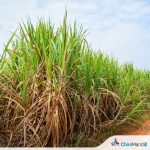In Sugar Season (Oct-Sep) 2022-23, India is expected to produce 336 LMT sugar with diversion of about 50 LMT for ethanol production. Thus, total sucrose production in the country would be 386 LMT. This is a little less than last year sucrose production of 395 LMT (359 LMT sugar + 36 LMT for ethanol production) but second highest in last 5 years. As far as sugar production scenario is concerned, Maharashtra and Karnataka have got less sugar production this season due to reduced yield which can be attributed to ratoon crop as well as untimely rains during Sep-Oct 2022. However, some states like Tamil Nadu has higher production than last year. So overall, sucrose production is expected to be less by about 3% from last season 2021-22.
Keeping in view the domestic consumption of about 275 LMT sugar and exports of about 61 LMT, there is expected to be closing balance of about 70 LMT sugar which is sufficient to meet domestic demand for about 3 months. Therefore, sufficient sugar is available for domestic consumers at reasonable prices throughout the year.
It is remarkable that when international prices of sugar are at record high and are showing no signs of decline, domestic prices have been kept stable with little increase as a result of pragmatic government policy interventions. Domestic ex-mill prices of sugar are stable and in the range of ₹ 32-35/kg. The average retail price of sugar in the country is about ₹ 41.50/ kg & is likely to remain in the range of ₹ 37-43/kg in coming months which is not a cause of worry. It is outcome of Government policies that sugar is not ‘bitter’ in the country and still sweet.
Interestingly, with diversion of sugar towards ethanol production and exports of sugar, financial position of many sugar mills have strengthened and as a result, cane dues to farmers have been paid in time. During SS 2021-22, sugar mills procured sugarcane worth more than ₹ 1.18 lakh crore and released payment of more than 1.17 lakh crore for the season with no financial assistance (subsidy) from Government of India. Thus, cane dues for sugar season 2021-22 are less than ₹ 500 crore indicating that 99.7% of cane dues have already been cleared for SS 2021-22 and 99.9% dues of earlier seasons have already been paid which in itself is a record.
As a long-term measure to enable sugar sector to grow as self-sufficient, the Central Government has been encouraging sugar mills to divert sugar to ethanol and also to export surplus sugar so that sugar mills may make payment of cane dues to farmers in time and also mills may have better financial conditions to continue their operations. With success in both the measures, Sugar sector is now self-sufficient with no subsidy for the sector since SS 2021-22.
Growth of ethanol as biofuel sector in last 5 years has amply supported the sugar sector as diversion of sugar to ethanol has led to better financial positions of sugar mills due to faster payments, reduced working capital requirements and less blockage of funds due to less surplus sugar with mills. During 2021-22, revenue of more than ₹20,000 crore has been made by sugar mills/distilleries from sale of ethanol which has also played its role in early clearance of cane dues of farmers.
Ethanol production capacity of molasses/sugar-based distilleries has increased to 700 crore litres per annum and the progress is still continuing to meet targets of 20% blending by 2025 under Ethanol Blending with Petrol (EBP) Programme. In new season, the diversion of sugar to ethanol is expected to increase from 36 LMT to 50 LMT which would generate revenue for sugar mills amounting to about ₹ 25,000 crores. The Ethanol Blending Programme has saved foreign exchange as well as strengthen energy security of the country. By 2025, it is targeted to divert more than 60 LMT of excess sugar to ethanol, which would solve the problem of high inventories of sugar, improve liquidity of mills thereby help in timely payment of cane dues of farmers and will also generate employment opportunities in rural areas.
To achieve blending targets, Government is encouraging sugar mills and distilleries to enhance their distillation capacities for which Government is facilitating them to avail loans from banks for which interest subvention @ 6% or 50% of the interest charged by the banks whichever is lower is being borne by Government. This will bring an investment of about ₹ 41,000 crore. In past 4 years, loans of about ₹20,343 crore have been sanctioned to 243 project proponents out of which loans of about ₹ 11,093 cr have been disbursed to 210 project proponents.
Sympony of Government policies, State Government and Sugar mills have led to promotion of interest of farmers, consumers as well as workers in sugar sector affecting livelihood of more than 5 crore persons directly and all the residents of the country indirectly by making sugar afforable for one and all.












